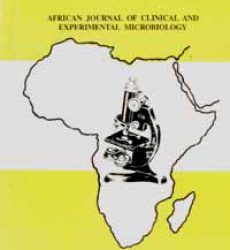1Chukwuka, C. P., 2Emele, F. E., 3Agbakoba, N. R., *1Ezeagwuna, D. A., and 4Oguejiofor, C. B.
1Department of Medical Microbiology and Parasitology, Nnamdi Azikiwe University Teaching Hospital, Nnewi, Anambra State, Nigeria
2Department of Medical Microbiology and Parasitology, Nnamdi Azikiwe University, Nnewi, Anambra State, Nigeria
3Department of Medical Laboratory Science, College of Health Sciences, Nnamdi Azikiwe University, Nnewi Campus Nnewi, Anambra State, Nigeria
4Department of Obstetrics and Gynecology, College of Health Sciences, Nnamdi Azikiwe University, Nnewi Campus, Nnewi, Anambra State, Nigeria
*Correspondence to: dorrezeagwuna@gmail.com; 08037745700 & 07088454383; ORCID-0000-0003-2259-720X
Abstract:
Background: Much controversies have been associated with the pathogenicity of Mycoplasma hominis but little has been done to unravel the mystery behind the different views. This study aimed at investigating the genetic variants abounding within M. hominis and the distribution of the virulent genes among the variants.
Methodology: Twenty (20) M. hominis isolates from high vaginal swabs of women (11 from pregnant women and 9 from women presenting with infertility) attending the Obstetrics and Gynaecology clinics of Nnamdi Azikiwe University Teaching Hospital (NAUTH), Nnewi, Nigeria, were sequenced using 16S rRNA universal gene target for the purpose of phylogenetic analysis and epidemiological typing. The isolates were also screened for the presence of M. hominis variable adherence antigen (vaa) and p120 virulent genes using primer constructs from the respective genes in a conventional PCR protocol. Continue reading “Phylogenetic variants of Mycoplasma hominis from pregnant women and women presenting with infertility in Nnamdi Azikiwe University Teaching Hospital, Nnewi, Nigeria”

